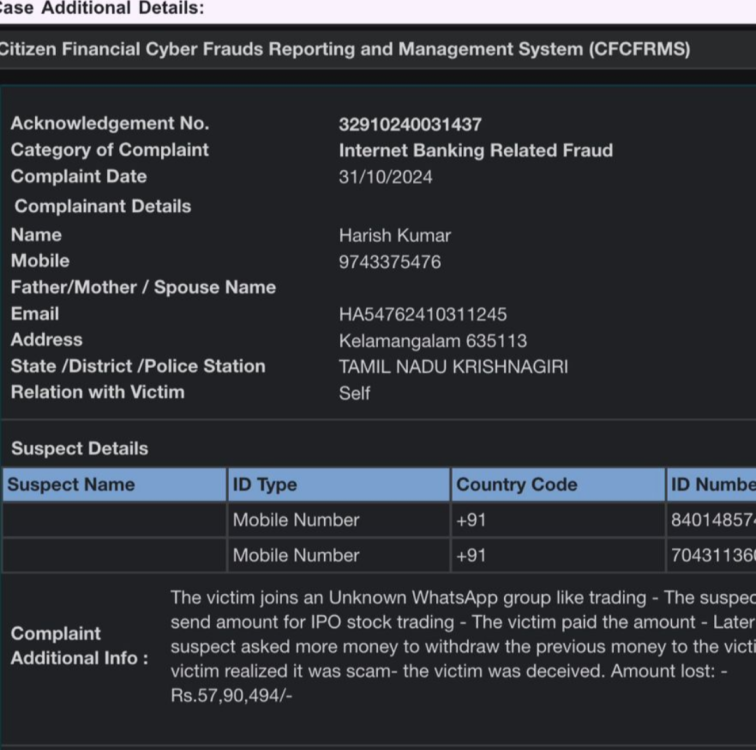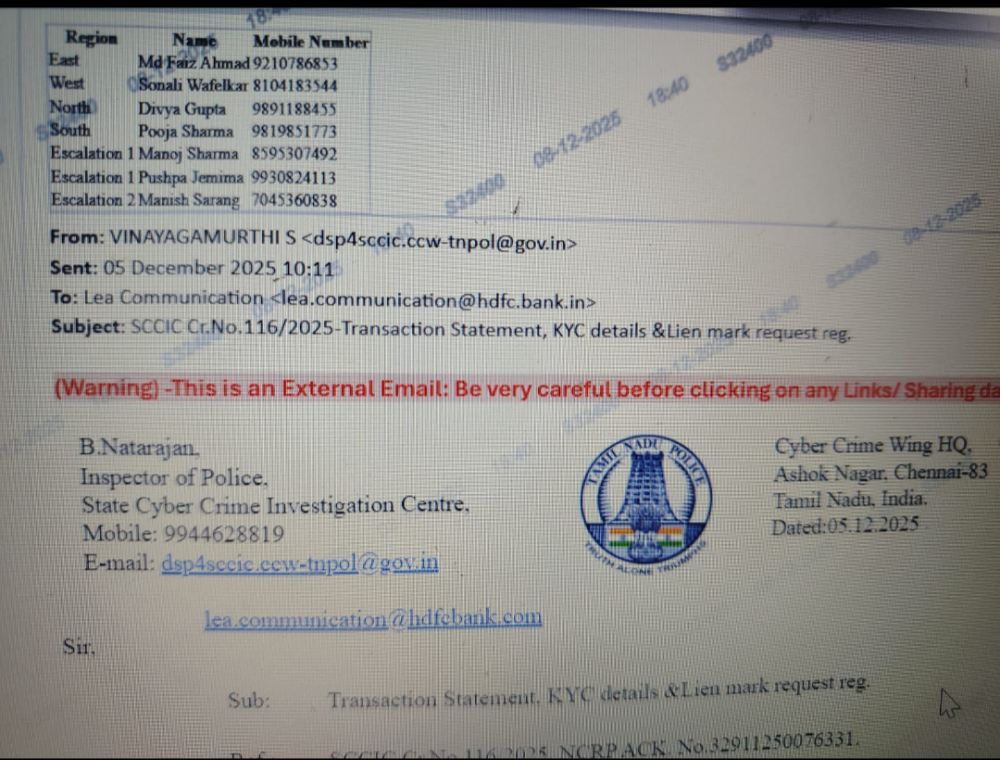All Activity
- Today
-
aaradhanaidb joined the community
-
foriho9802 joined the community
-
Jimmsbond007 joined the community
-
Chpnbezevtac joined the community
-
Jtexhhcweycc joined the community
- Yesterday
-
ap-219 exam {New-Year} 2026! Salesforce AP-219 Practice Exam Dumps
Jamshi0007 replied to profkate's topic in Education / Strategy
Hello BC Game Support Team, I hope you are doing well. I would like to kindly ask if there is any New Year or Christmas bonus available for my account. I am an active user on BC Game and did not receive any bonus email or notification yet. Please check my account and let me know if I am eligible, or kindly resend the bonus if available. My details are: Username: 46314210 Registered Email: [email protected] Thank you very much for your support. Best regards, -
Jamshi0007 joined the community
-
BcTasNu joined the community
-
Bongjo joined the community
-
Do you know anybody know where I can get a promo code
ROENZON replied to Tvihkhmzuycc's topic in User Events & Promos
yes how to receive promo code in email.. I want to receive also -
ROENZON joined the community
-
Darthswager joined the community
-
PpppP888 started following Maximo_BCGAME1
-
PpppP888 started following Halloween Special
-
PpppP888 started following BCGame_Maxim
-
Blaxxicekid started following 4,23 $BCD Cocco Code valid For All players Lv
- Last week
-
Achieving Order Management Administrator Accredited Professional Accredited Professional certification is no longer just a bonus for your resume—it has become essential for professionals aiming to distinguish themselves in today’s highly competitive job market. Yet, reaching success in the AP-219 exam can be overwhelming due to common hurdles like outdated study guides, tight schedules, and confusion about the real AP-219 exam structure. This is exactly where deliver exceptional value. Designed with accuracy and refreshed frequently, our Salesforce AP-219 dumps offer genuine, exam-specific questions that reflect the actual test format. These resources not only save precious study time but also build confidence, making it possible to prepare for the AP-219 exam with focus and efficiency. By selecting QA4exam, candidates gain a preparation path that blends trustworthiness, relevance, and ease—transforming exam prep from a stressful task into a straightforward route to career advancement. Realistic Practice That Reflects the AP-219 Exam One of the biggest reasons candidates struggle is the lack of targeted and relevant AP-219 exam practice. Generic notes often skip over critical areas or fail to represent how the exam presents its questions. QA4exam bridges this gap by providing thoroughly verified Salesforce AP-219 dumps, perfectly mapped to official objectives. Each domain is carefully addressed, ensuring no key concept is overlooked. By training with these resources, learners sharpen their subject knowledge while also becoming comfortable with the question style they’ll face on exam day. With this strong preparation, candidates can approach the exam with confidence and a clear strategy—boosting their chances of passing on the very first attempt. Why Choose QA4exam Salesforce AP-219 Dumps ? QA4exam is trusted by countless professionals who rely on quality study material for their Certs journey. Our solutions empower learners to prepare smartly, cut through distractions, and focus only on what truly matters. With regularly updated content and realistic exam simulations, candidates gain a competitive edge in securing their desired Certs. If you’re serious about achieving Accredited Professional Certs, QA4exam gives you the ultimate toolkit for success. Claim Your 50% Discount Today!
-
Dexter1994 started following 4,23 $BCD Cocco Code valid For All players Lv
-
bcd cocco code 4,23 $BCD Cocco Code valid For All players Lv
Dexter1994 replied to Maximo_BCGAME1's topic in Sports Discussion
24401420 Me uid 24401420 Dexter1994 -
bcd cocco code 4,23 $BCD Cocco Code valid For All players Lv
Estiloboy replied to Maximo_BCGAME1's topic in Sports Discussion
-
Case 1Order Details:Withdraw Amount: 25000 INROrder ID: F-1847607437977800173Status(f4): SuccessFee: 0 INRCreated Time: 1/11/2025, 10:19:20 pmCase 2Order Details:Withdraw Amount: 10000 INROrder ID: F-1847607632385834428Case 3 Order Details:Withdraw Amount: 50000 INROrder ID: F-1847141698153024199 UTR :530071143441 UTR: 530795694002 UTR: 530795688816 THe merchant is involved in fruad activities the money was ilegal i withdraw bank account is frozen due to these amount now it needs legal proceedings bcgame is telling me on we can't help you as i was complaint with in 30 days they didn't take action now if ask them check they replied that is more one month old that is not excuse that is scaming openly near about 10 deposit forfited or sacmed 15 withdrawal forfited that is not fairness
-
BCF_K_MANAGEMENTSCAM started following Deposit and Withdrawals Pending
-
Deposit and Withdrawals Pending
BCF_K_MANAGEMENTSCAM replied to Deadpool2006's topic in Submit a Review
Case 1 Order Details: Withdraw Amount: 25000 INR Order ID: F-1847607437977800173 Status(f4): Success Fee: 0 INR Created Time: 1/11/2025, 10:19:20 pm Case 2 Order Details: Withdraw Amount: 10000 INR Order ID: F-1847607632385834428 Case 3 Order Details: Withdraw Amount: 50000 INR Order ID: F-184714 1698153024199 -
gila9999 started following Coco_Father
-
BC GAME DEPOSIT FRAUD I have been facing a serious issue with a deposit that was successfully paid from my side but has not been credited to my BC.Game account. I have provided every proof possible, yet I have received no resolution or meaningful support. Deposit Issue Details BC Game ID: 5160414 Amount: 15000 INR UTR: 391557750002 Order ID: F-1847495123321369581 TxID: 59968 Date & Time: 31/10/2025, 4:34:08 pm Status Shown on BC.Game: Canceled Credited Amount: 0 INR What Actually Happened I paid 15000 INR successfully through UPI. The amount was debited from my bank account. I have attached: Bank statement Payment confirmation screenshots Video proof of the transaction After creating a support ticket, it was canceled automatically, with no help provided. I contacted the merchant, and they confirmed they received the payment, but said I must contact BC.Game support for the credit. Unfortunately, BC.Game support: Provides only automated bot replies Does not offer any human assistance Does not respond to emails at [email protected] Leaves tickets pending for long periods with no action Why I Am Posting Here I have exhausted all official support channels: Live chat only replies with repetitive bot responses Email support has not responded for a long time Discord moderators simply redirect users back to the live chat bot In this case, the system clearly shows a deposit failure, but the amount was successfully received by the merchant, and all proof from my side is genuine and already submitted. I am requesting a manual review of this transaction, as this is serious and concerns real money lost due to system failure. Request Please review my transaction manually and credit the deposit amount to my account, or process a refund if crediting is not possible. All data, screenshots, and video proof can be re-submitted if needed. I hope this issue can be resolved professionally and promptly. Thank you.
-
pachinkaw started following Casino Promotions
-
ShamsuAa22 started following shamimcrypto
-
The only way to make a million dollars at bc game
SylviaG8 replied to Creditmydeposit's topic in Crash
Thanks for your tips, I’ll keep them in mind.- 1 reply
-
- crash
- loss recover
-
(and 3 more)
Tagged with:
-
ReddyBook is a fast-growing online platform designed to give users a smooth, secure, and hassle-free betting experience. Known for its simple interface, quick navigation, and reliable features, ReddyBook makes it easy for both beginners and experienced players to enjoy sports and gaming in one place. Visit now- https://reddybookd.com/home
-
BC.GAME’s Ultimate Christmas & New Year Giveaway!
reddybooklive replied to BCGame_Maxim's topic in VIP Challenges
ReddyBook has made betting so much easier for me. The platform is smooth, the login is quick, and the odds update instantly. Really one of the best betting experiences I’ve had.” Know more-https://reddybookd.com/home -
4,23 $BCD Cocco Code valid For All players Lv
MitchelMcGilleFoalan replied to Maximo_BCGAME1's topic in Introduce Yourself
Uid 23512611 -
My UID NUMBER IS 42918662 MY TWO DEPOSIT TICKET ARE PANDING FOR 25 DAYS
-
What happens to my bet if my player retires during the match?
Ramsetu replied to Sexpkdzsesac's topic in Community Discussion
My UID NUMBER IS 42918662 MY TWO DEPOSIT TICKET ARE PANDING FOR 20 DAY'S PLEASE SOLVE THE PROBLEM -
Hi everyone! I’m new here and excited to join the community. I’ve recently been getting into Keno — love the excitement of watching the numbers come up! I’m here to connect with other players, share tips, and learn how you all approach your games. Outside of Keno, I also enjoy mobile gaming — especially story-driven games. If anyone’s interested, here’s a link to the Summertime Saga Mod APK that I’ve been playing lately: [https://summertimesagasdl.com/ Looking forward to meeting you all and chatting about games, strategies, and more!
-
I have been seeing a lot of threads lately about paid traffic getting more expensive, especially in iGaming, and it honestly made me stop and think about my own campaigns. A few years back, CPC felt manageable. You could tweak bids, pause a few placements, and things would balance out. Now it feels like every click costs more, and not all of them are worth it. I am curious how others are handling this without completely killing volume. The biggest pain point for me was realizing that lowering bids alone did not really solve anything. Sure, costs went down on paper, but traffic quality dropped fast. I started seeing shorter sessions, higher bounce rates, and fewer deposits. It felt like I was choosing between paying too much or getting junk traffic. Talking to a few peers, I realized this was a common frustration. Everyone wanted cheaper clicks, but no one wanted to lose serious players. What helped me was changing how I looked at optimization. Instead of obsessing over CPC as a single number, I started paying more attention to what happened after the click. I tested tighter targeting first. Cutting out broad placements felt scary at the start because traffic volume dipped, but the remaining users actually behaved better. Fewer clicks, but more meaningful ones. That shift alone made my spend feel less painful. Another thing I tested was separating campaigns by intent. Early on, I lumped everything together because it was easier to manage. Once I split campaigns based on keywords, creatives, and even landing pages, patterns became clearer. Some ads pulled cheap clicks but no value. Others were more expensive but converted better. I stopped judging them only by CPC and started asking if they made sense overall. Creatives mattered more than I expected. I used to rotate ads randomly and hope for the best. When I slowed down and looked at which messages attracted real players, I noticed a pattern. Ads that felt too pushy brought clicks but low trust. Simpler, honest messaging pulled fewer clicks, but people stayed longer. It felt counterintuitive, but spending slightly more for better intent saved money in the long run. Landing pages were another quiet problem. I blamed traffic sources for poor quality, but some of it was on me. Pages that loaded slowly or felt cluttered pushed users away fast. Once I cleaned things up and made the message match the ad more closely, the same traffic performed better. It did not reduce CPC directly, but it improved value per click, which mattered more. One lesson I learned the hard way was to stop chasing every new trick. I tested aggressive bid drops, weird schedules, and constant micro changes. Most of that just added noise. What worked was steady testing, one change at a time, and giving it enough time to show results. iGaming traffic is sensitive, and over-optimizing can hurt more than help. At some point, I also realized that not all networks behave the same way. Some were better for volume, others for quality. Instead of expecting one platform to do everything, I adjusted my expectations. I treated each source differently and optimized within its limits. Reading more about how others approach iGaming CPC campaigns helped me frame this mindset better, especially when comparing traffic intent and cost behavior across platforms. I am not saying costs magically dropped overnight. They did not. But what changed was how predictable my spend became. I felt more in control. I knew why some clicks cost more and when that was actually okay. The stress of watching budgets drain without results eased up once I focused on quality signals instead of just click prices. If you are stuck in that loop of cutting bids and losing quality, you are not alone. From what I have seen and tested, the balance comes from understanding intent, cleaning up targeting, and being patient with optimization. It is less about gaming the system and more about aligning your ads with the right users. I am still learning, but this approach has made iGaming CPC campaigns feel less like a gamble and more like a calculated risk.
-
Withdrawal Successful but Amount Not Credited – UTR Provided
Yuoeufozxvcc replied to Hjyyuczzarac's topic in Submit a Review
Same brother, I am with you, withdrawal of Rs 2k was successful but the AC has not come yet and when I raised the ticket, they say that they have sent it yesterday and give fake screenshots.- 1 reply
-
- @bcgameofficial
- @bcgames.
-
(and 2 more)
Tagged with:
- Earlier
-
CHALLENGE TIME! SHARE YOUR CREATIVE IDEAS NOW!
Ckjcfhiipxcc replied to BCGame_Maxim's topic in VIP Challenges
Challenge Name: Lucky Comeback Challenge Challenge Idea This challenge is all about comebacks, emotions, and real gameplay stories. Players must experience a significant loss first, then recover and reach the target balance. It creates exciting screenshots, dramatic moments, and highly shareable content. Rules Starting balance: $10 Allowed games: Crash, Dice, Plinko Goal: Reach $50 balance Mandatory condition: Balance must drop to $3 or lower at least once before reaching $50 Time limit: 24 hours Not allowed: Martingale systems, Bonus Buy features How Winners Are Determined Winners are ranked by fastest completion time Participants must provide: Balance history screenshot Proof of balance dropping to $3 or less Final balance showing $50+ Rewards 1st place – $300 2nd place – $150 3rd place – $50 5 random participants – $20 each (to encourage wider participation) Why This Challenge Works Creates high emotional engagement (loss → comeback → win) Easy to verify and fair Encourages real gameplay screenshots Perfect for social media sharing & Discord activity Low risk of abuse Final Note This challenge motivates players to share their comeback stories, increases community interaction, and generates organic promotional content for BC.GAME. Good luck to everyone & have fun! UID: 97186045 Lucky Comeback Challenge Start: $10 Games: Crash / Dice / Plinko Goal: Reach $50 Mandatory rule: Your balance must drop to $3 or less at least once before reaching $50. ⏱ Time limit: 24 hours No Martingale, no Bonus Buy. Winner Selection Fastest player to complete the challenge with balance history screenshots showing: Drop to ≤ $3 Final balance $50+ Rewards $300 | $150 | $50 5 random participants – $20 Emotional comeback, real gameplay, easy verification, great for community & social sharing. Good luck! UID: 97186045 -

Unable to withdraw FIAT due to maintenance error
WinBigToday2020 replied to LVMS's topic in Suggestions & Feedback
THIS SITE SOME TIMES HAS TO DO MAINTENANCE, USALLY IT TAKES A DAY OR LESS. YOU WILL BE ABLE TO WITHDRAW ONC MAINTENCE IS DONE. I WITHDRAW THOUSANDS OF $ ALL THE TIME!!! SO YOUR GOOD!

.thumb.jpg.437fb6cc8bdd685a11da6fb374aea51f.jpg)










.png.5bbeb7bea1cc6890abab98195f90bbca.png)


